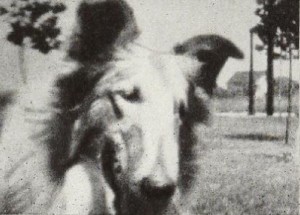
"Children and pets are generally lovable and always interesting; but filming them is not a simple task, as many amateurs have found out. Raymond J. Berger, in Lassie Stays Home, accomplishes it with a sure touch and an ease that will be the envy of his fellow filmers. The excellently planned story tells of a lost child who is found by Lassie, the loyal canine family member, after the baby's somewhat older sister hunts her frantically. No adult appears in any of the footage; and remarkably enough, one does not sense the directing mother, just out of camera range. The whole movie goes forward as if the children and Lassie were entirely alone, with the camera miles away. Here is 8mm at its best and here is a film that every amateur would be proud to have made." Movie Makers, Dec. 1945, 494.
"A family picture built around the young daughter of Ira Radovsky. She is coming into the age when little girls want to go for a walk when things at home are not completely as they would like them. We follow the adventures of this young lady and enjoy every moment of it." PSA Journal, Nov. 1958, 46.
"Glen Turner might take a cue from "Gigi" and "Thank Heaven for little girls" with curly hair and their interesting mud pies. With teddy bear and dog, she does for a walk. En route we view the ducks, geese and other farm animals. The trees display their fall wardrobe to add to the delight of a walk in the woods. Soon the dog realizes they have gone too far from home and he goes back for Mother. Soon we return to the little girl asleep admidst the golden leaves. An enjoyable picture of things little girls like to do" PSA Journal, Nov. 1958, 46-47.
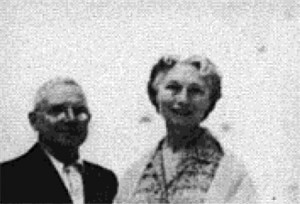
"The Los Angeles Cinema Club has captured the story of one lonely mother who finds the younger generations preoccupied. On one of her afternoon visits to the park she makes an acquaintance, followed by more frequent meetings. Soon, the children break this up by finding a home for mother. The end is a happy one." PSA Journal, Nov. 1958, 46.
"Love is found between a man and his mate, between adults and their children, for brothers and sisters, and in countless other familiar ways. But in this film we are introduced to yet another" PSA Journal, Aug. 1967, 37.
"In Love Apples, Henry Hoke presented what is, so far as Movie Makers records show, the first approach to filming the hobby and preoccupation of an entire family. Unquestionably the Hoke family likes tomatoes and, something less commonly encountered, it is willing to work to produce them. Mr. Hoke's Kodachrome film lets us see the entire family group at work planting, weeding, watering and picking — especially picking, because Mr. Hoke makes quite a cinematic point of eager hands reaching for tomatoes in and out of season. The continuity is active and full of humorous touches, with a shade too great an emphasis on camera tricks for their own sake; the photography is adequate and often provides much screen beauty. Above all, this film has a unity which, added to its unusual motive, brings it into the Honorable Mention class." Movie Makers, Dec. 1936, 549-550.
"Puppets have gained favor and interest among amateur filmers and Mr. and Mrs. Frank Kallenberg have done a right smart job with a table full of animals from the forest. The story opens with a monkey in a rocking char, reading his cook book. He turns the page to the recipe for ducks. This stimulates him to seek a duck, the capture of which creates quite an uproar among the animals. In the end, Mr. Monkey becomes aware of the error of his ways. This type of work is tedious and painstaking and these filmers have demonstrated their patience and skill in the movement of the many characters in telling a homey little story." PSA Journal, Nov. 1957, 33.
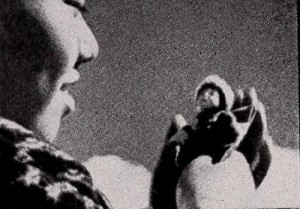
"Possibly the most outstanding features of Okamoto's work were his photography and composition. Many regarded his photography as the finest that had ever been put on motion picture film." American Cinematographer, Dec. 1932, 7.
"Second prize was awarded to Tatsuichi Okamoto of Matsuyama, Japan. Title of his single reeler is 'Lullaby,' which depicts the emotions of a mother singing to her child." Variety, Dec. 13, 1932, 2.
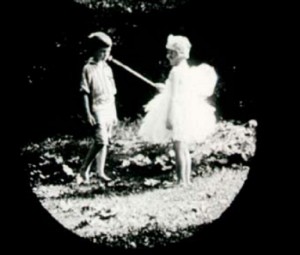
"Alexander Black imagines his grandchildren appearing around him in a swirl of double-exposed trick cinematography." UC Berkeley Library.
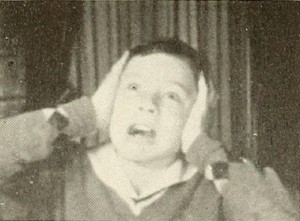
"The plot of Magic Mush is one that is fairly familiar to movie makers. A youngster saves up enough of the coupons that come with a breakfast food to get a free magic set, complete with wand. It turns out that the magic wand actually works, and Sister and Brother make things appear and disappear to their hearts' content. The trick work involved is done by stopping the camera, removing some article from the scene, or adding one to it, and starting the camera again. To this familiar plot, Eric N. Unmack has added some clever ideas of his own. One amusing device is the return of a kitten, rescued from the limbo of magic; she comes floating down, tied to a small parachute. Other clever tricks and especially good acting make this a first class family reel. All of it is presented with uniformly excellent interior filming." Movie Makers, Dec. 1941, 566.
Total Pages: 15